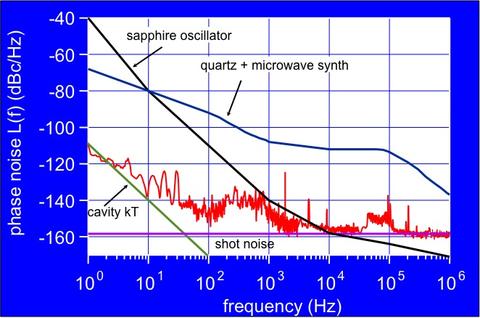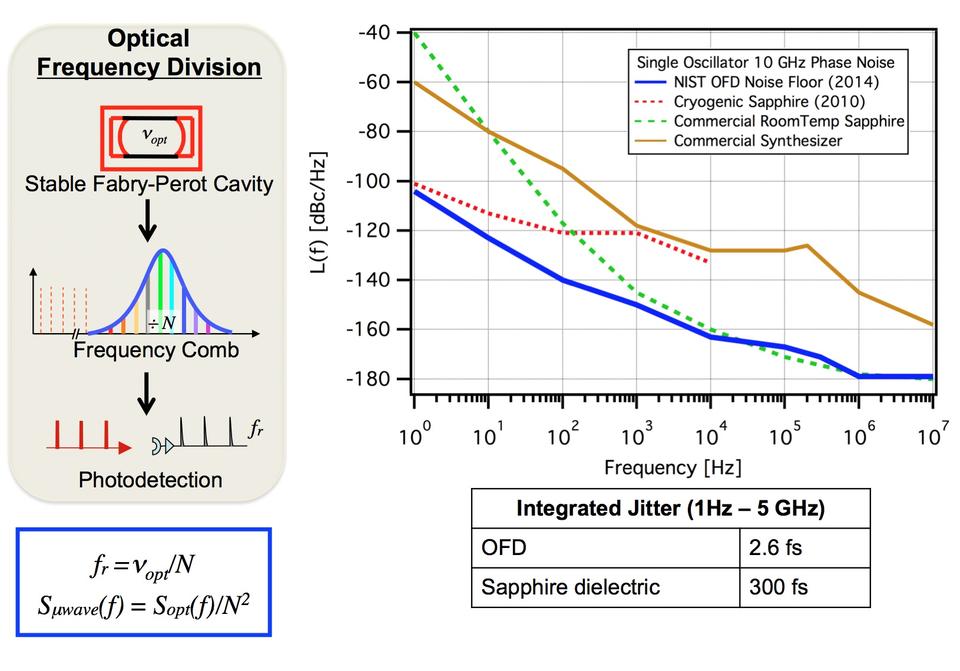Summary
We use femtosecond-laser frequency combs to generate optical and microwave waveforms with unprecedented noise performance.
Description

A typical optical frequency comb consists of thousands to millions of phase coherent modes (the "teeth" of the comb) that can all be used to synthesize precisely controlled electromagnetic waveforms. Our main research thrust in this area has been focused on the generation of microwave and millimeter wave signals with extremely low phase noise (or timing jitter); however, the basic principles we are developing can be extended to the generation of waveforms of arbitrary shape and frequency composition that would extend well beyond current electronic limits. Agile optical signal processing, based on synthesis and control of light, holds the potential to dramatically improve technology and metrology, including applications in radar and sensing, high-speed signal processing, communications and navigation, and data encryption. Our photonics approach to low-noise microwave generation has enabled 10GHz signals with close-to-carrier absolute phase noise less than −100 dBc/Hz, a value 40 dB lower than the best room-temperature electronic oscillators. The exceptionally low phase noise arises from the frequency division of a stable optical oscillator using a femtosecond laser frequency comb. In our technique, which we call "optical frequency division" (OFD), the stability of the optical reference is transferred to the timing in the pulse train of a modelocked laser. Photodetection of this stable optical pulse train generates an electronic pulse train with a spectrum composed of high spectral purity harmonics of the pulse repetition rate, up to the cutoff bandwidth of the photodiode.

Apply for an NRC postdoc in optical atomic clock or fs-laser frequency comb research. Application deadlines are February 1 and August 1 annually (but inquire well in advance).
Summer Undergraduate Research Fellowship (SURF)
Summer program at NIST-Boulder for undergraduates in science, engineering, and mathematics. The application deadline is February 15 annually.
Postdoctoral, Visiting Scientist, and Graduate Positions
Our Group has periodic openings for Postdoctoral Fellows, Visiting Scientists, and Graduate Students. Please contact us for more information.

